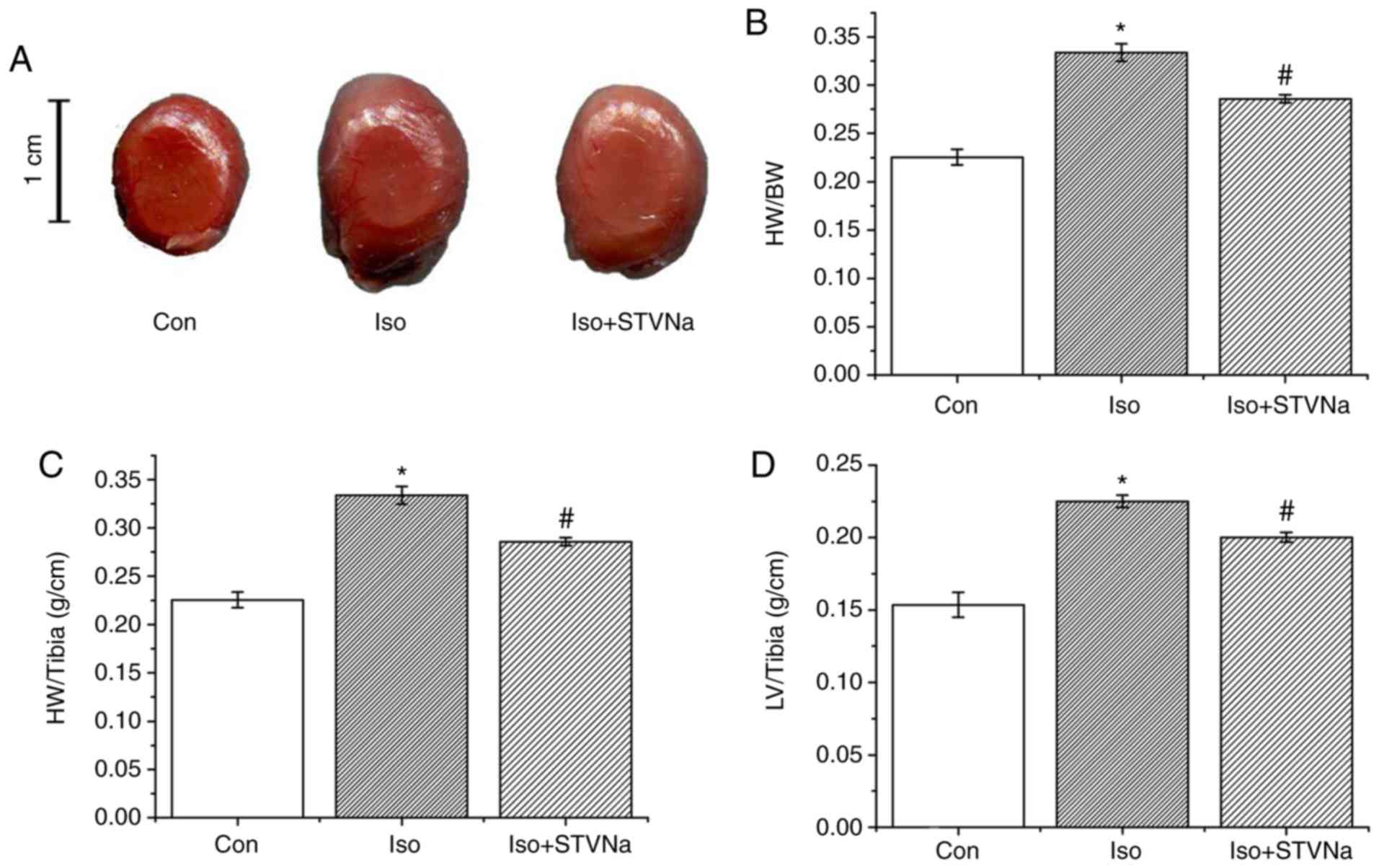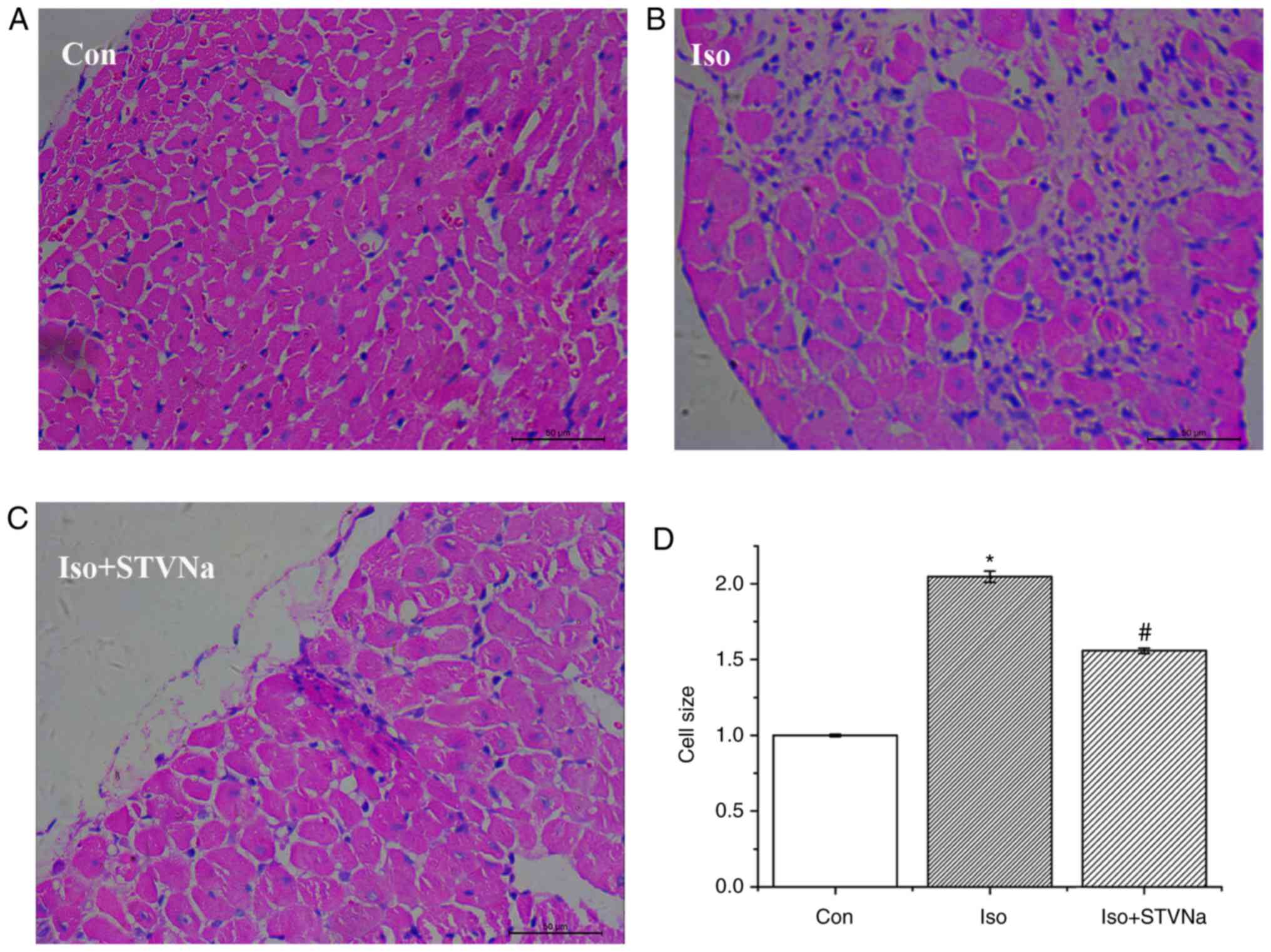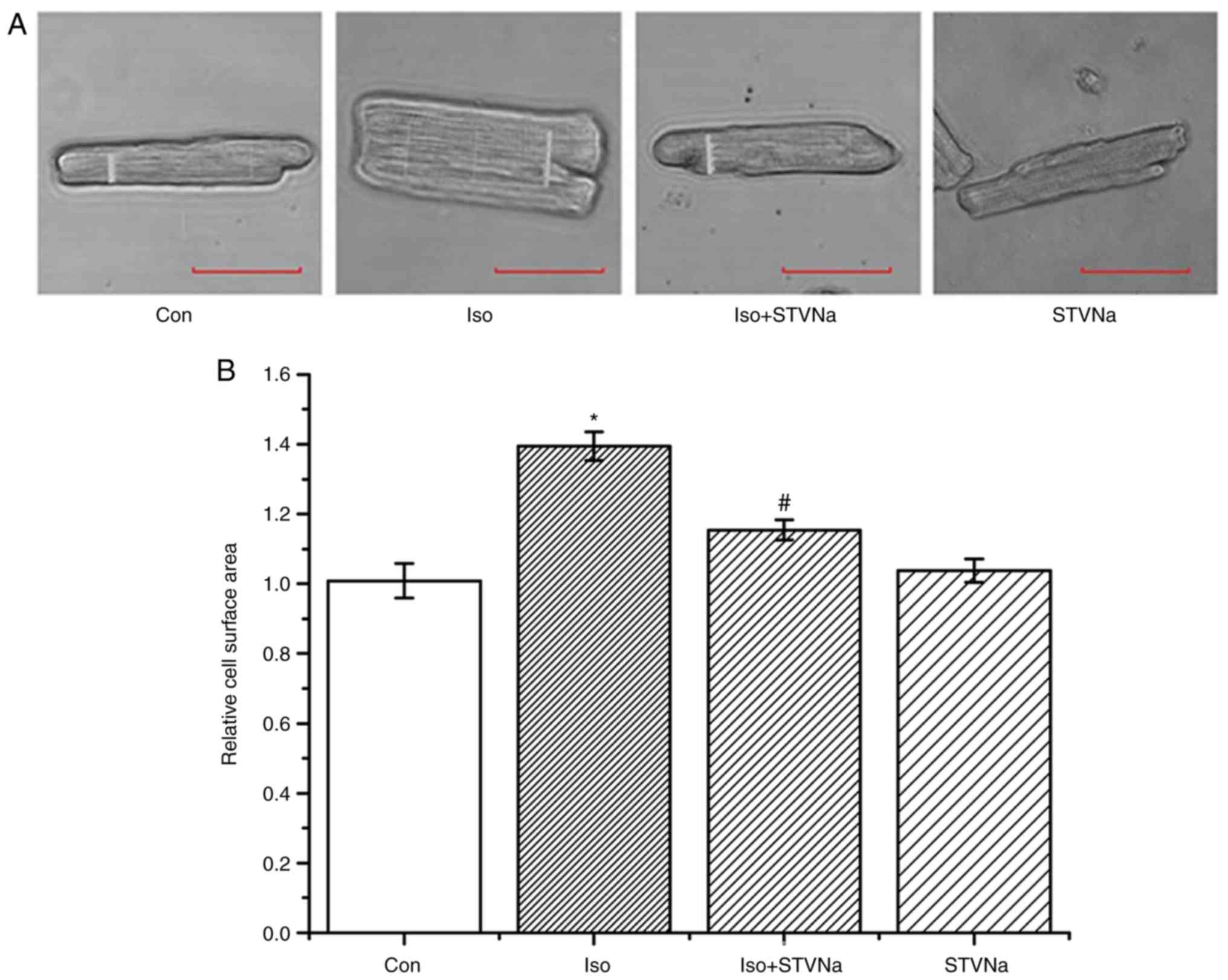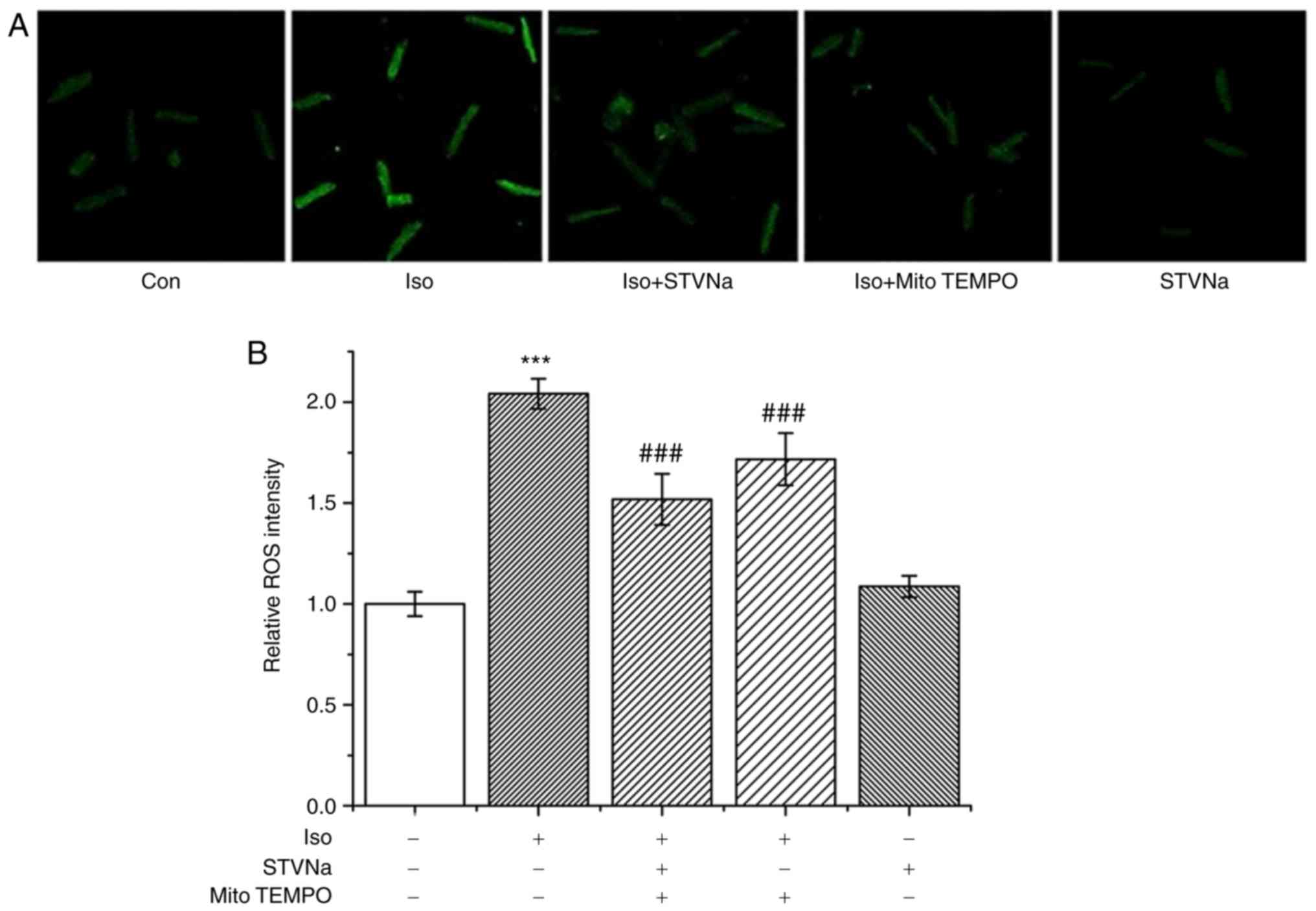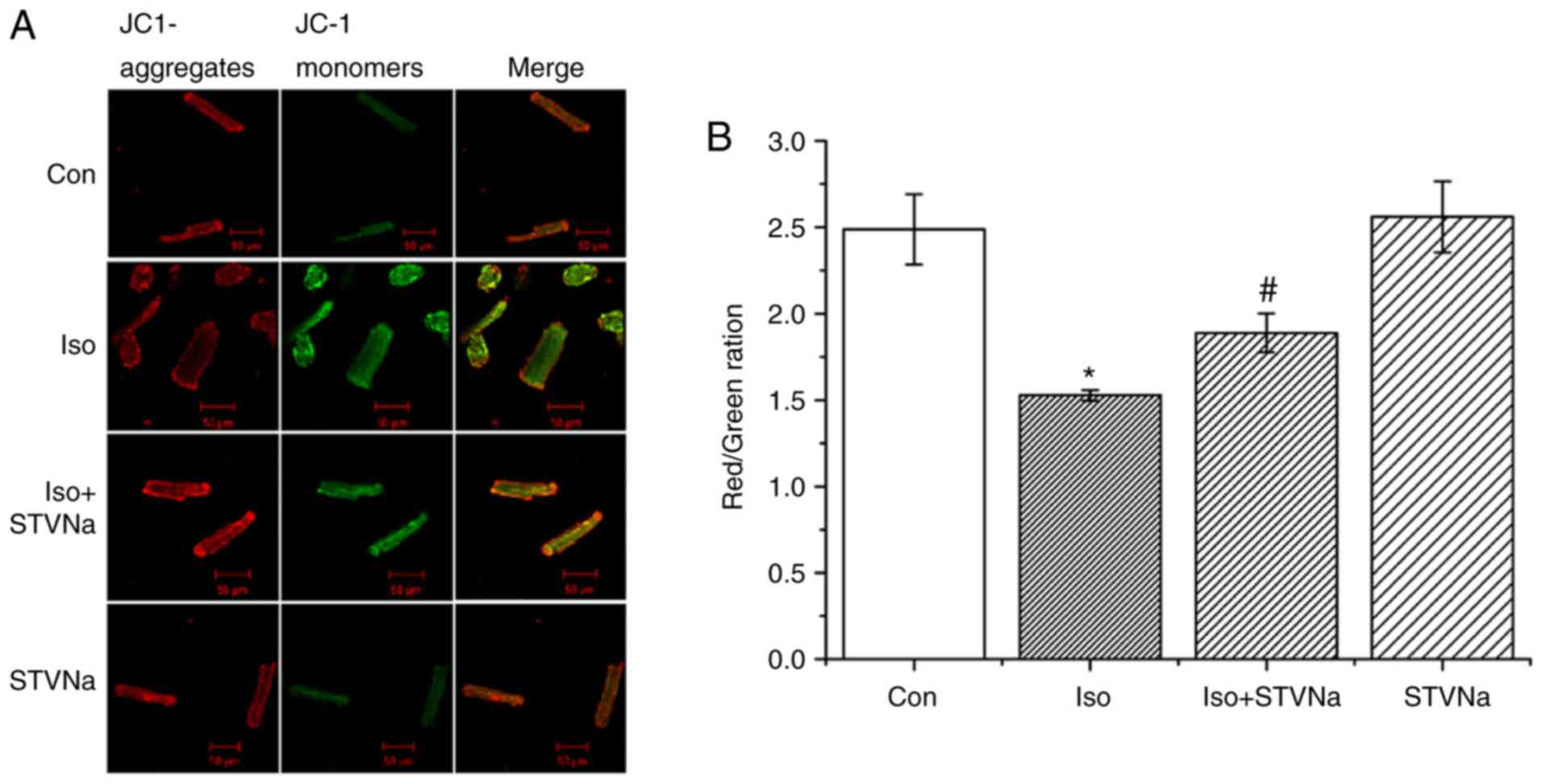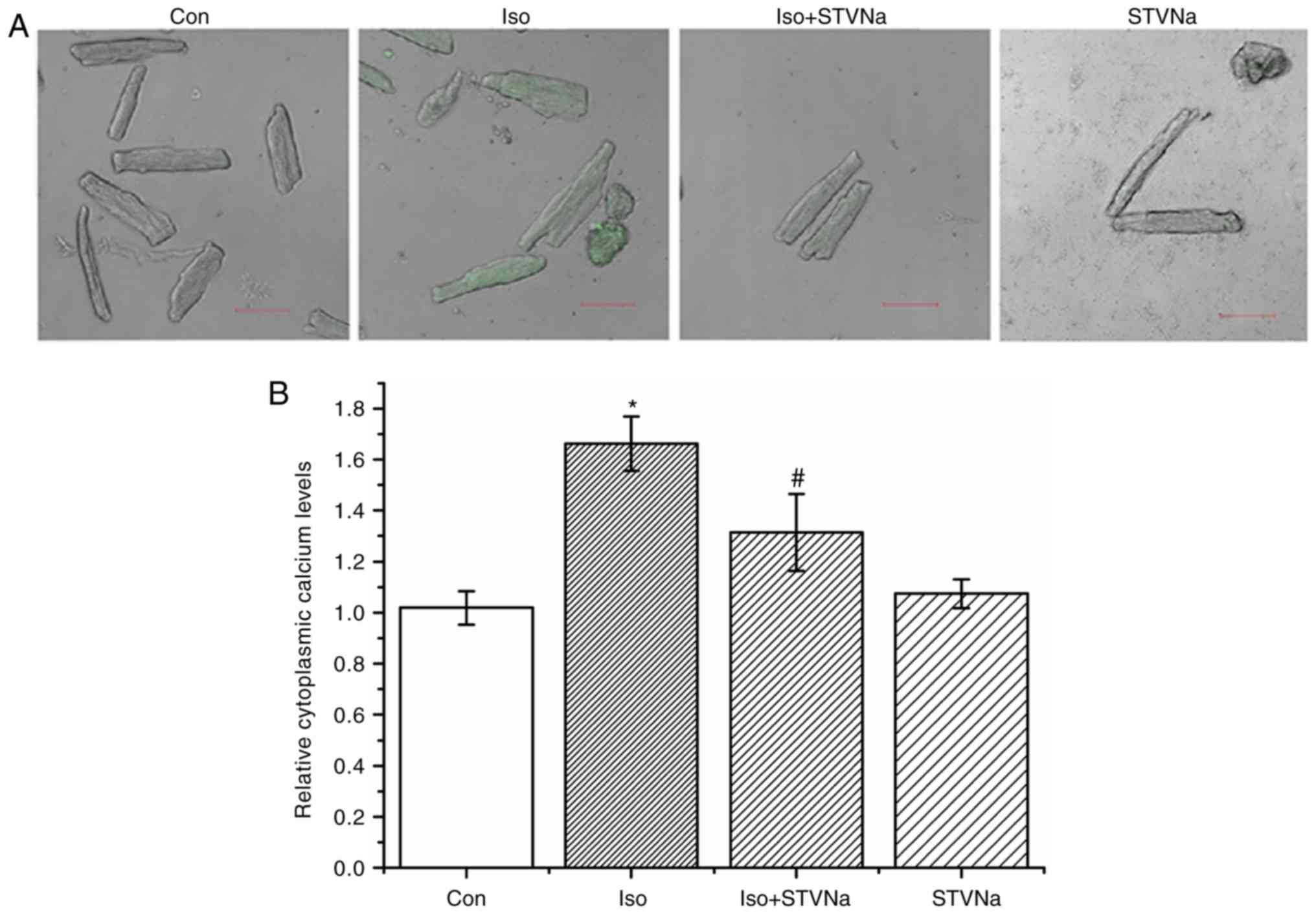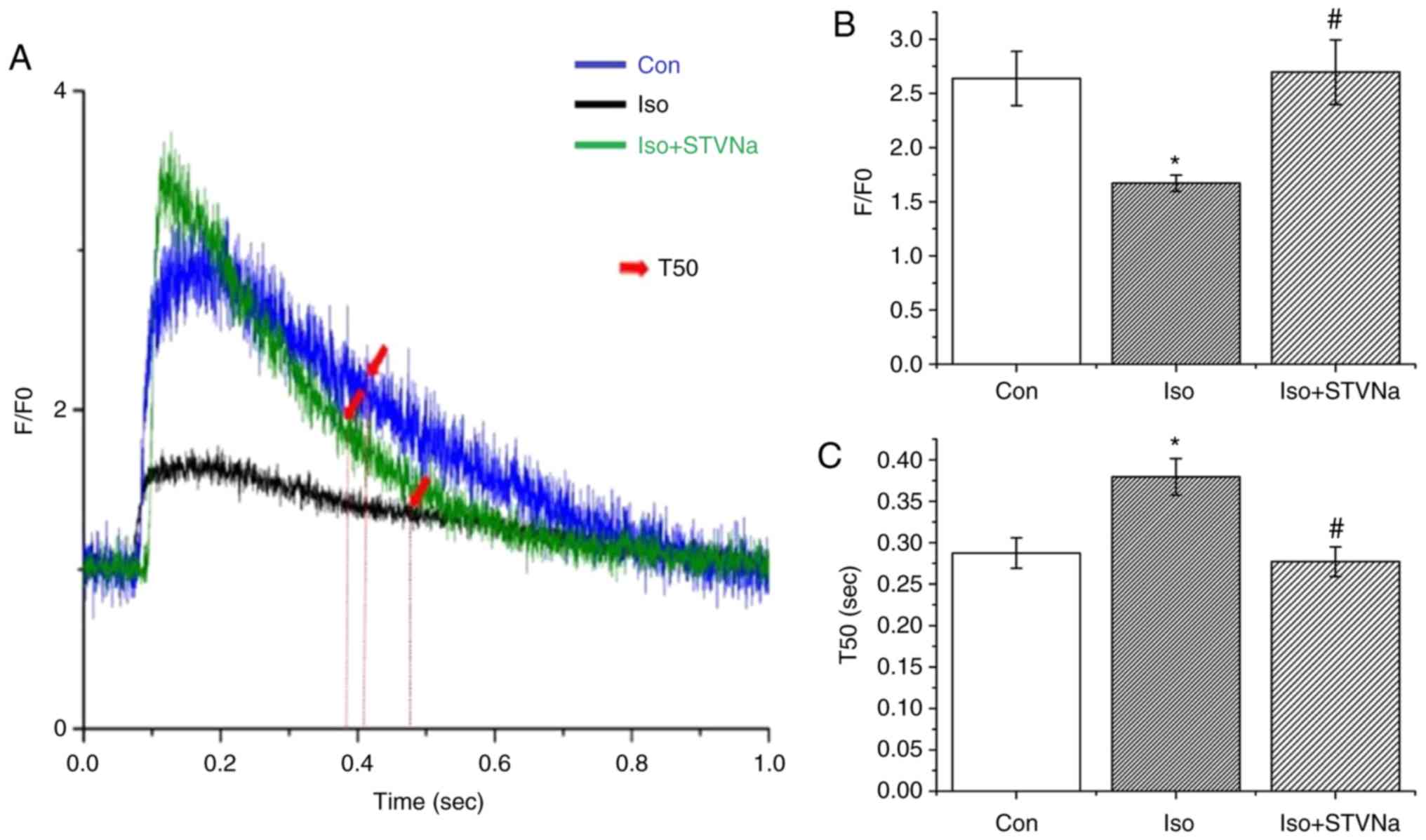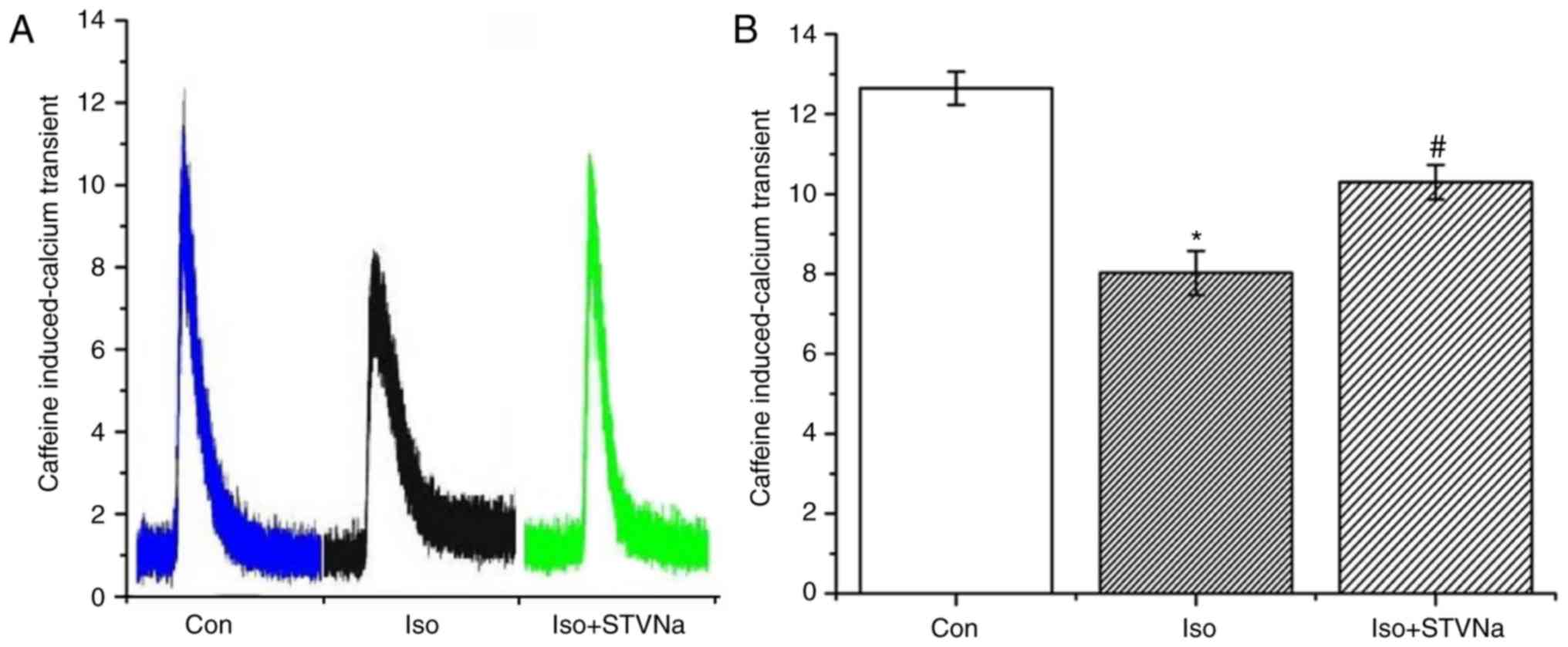|
1
|
Hu H, Sun Xo, Tian F, Zhang H, Liu Q and
Tan W: Neuroprotective effects of isosteviol sodium injection on
acute focal cerebral ischemia in rats. Oxid Med Cell Longev.
2016.1379162:2016.
|
|
2
|
Zhang H, Sun X, Xie Y, Zan J and Tan W:
Isosteviol sodium protects against permanent cerebral ischemia
injury in mice via inhibition of NF-κB-mediated inflammatory and
apoptotic responses. J Stroke Cerebrovasc Dis. 26:2603–2614. 2017.
View Article : Google Scholar : PubMed/NCBI
|
|
3
|
Zan J, Zhang H, Lu MY, Beng HM, Zhong KL,
Sun XO and Tan W: Isosteviol sodium injection improves outcomes by
modulating TLRs/NF-κB-dependent inflammatory responses following
experimental traumatic brain injury in rats. Neuroreport.
29:794–803. 2018. View Article : Google Scholar : PubMed/NCBI
|
|
4
|
Zhong KL, Lu MY, Liu F, Mei Y, Zhang XJ,
Zhang H, Zan J, Sun XO and Tan W: Isosteviol sodium protects neural
cells against hypoxia-induced apoptosis through inhibiting MAPK and
NF-κB pathways. J Stroke Cerebrovasc Dis. 28:175–184. 2019.
View Article : Google Scholar
|
|
5
|
Sun X, Yang Y, Xie Y, Shi X, Huang L and
Tan W: Protective role of STVNa in myocardial ischemia reperfusion
injury by inhibiting mitochondrial fission. Oncotarget.
9:1898–1905. 2017.
|
|
6
|
Liu Q, Hu H, Hu T, Han T, Wang A, Huang L,
Tan Q and Tan W: STVNa attenuates right ventricle hypertrophy and
pulmonary artery remodeling in rats induced by transverse aortic
constriction. Biomed Pharmacother. 101:371–378. 2018. View Article : Google Scholar : PubMed/NCBI
|
|
7
|
Tang SG, Liu XY, Ye JM, Hu TT, Yang YY,
Han T and Tan W: Isosteviol ameliorates diabetic cardiomyopathy in
rats by inhibiting ERK and NF-κB signaling pathways. J Endocrinol.
238:47–60. 2018. View Article : Google Scholar : PubMed/NCBI
|
|
8
|
Dini FL, Galeotti GG, Terlizzese G,
Fabiani I, Pugliese NR and Rovai I: Left ventricular mass and
thickness: Why does it matter? . Heart Fail Clin. 15:159–166. 2019.
View Article : Google Scholar : PubMed/NCBI
|
|
9
|
Bertero E and Maack C: Metabolic
remodelling in heart failure Nat Rev Cardiol. 15:457–470. 2018.
|
|
10
|
Haselhuhn LR, Brotman DJ and Wittstein IS:
Heart failure guidelines: What you need to know about the 2017
focused update. Cleve Clin J Med. 86:123–139. 2019. View Article : Google Scholar : PubMed/NCBI
|
|
11
|
Tse J, Powell JR, Baste CA, Priest RE and
Kuo JF: Isoproterenol-induced cardiac hypertrophy: Modifications in
characteristics of beta-adrenergic receptor, adenylate cyclase, and
ventricular contraction. Endocrinology. 105:246–255. 1979.
View Article : Google Scholar : PubMed/NCBI
|
|
12
|
Morisco C, Zebrowski DC, Vatner DE, Vatner
SF and Sadoshim J: Beta-adrenergic cardiac hypertrophy is mediated
primarily by the beta(1)-subtype in the rat heart. J Mol Cell
Cardiol. 33:561–573. 2001. View Article : Google Scholar : PubMed/NCBI
|
|
13
|
Osadchii OE: Cardiac hypertrophy induced
by sustained beta-adrenoreceptor activation: Pathophysiological
aspects. Heart Fail Rev. 12:66–86. 2007. View Article : Google Scholar : PubMed/NCBI
|
|
14
|
Nichtova Z, Novotova M, Kralova E and
Stankovicova T: Morphological and functional characteristics of
models of experimental myocardial injury induced by isoproterenol.
Gen Physiol Biophys. 31:141–151. 2012. View Article : Google Scholar : PubMed/NCBI
|
|
15
|
Krenek P, Kmecova J, Kucerova D, Bajuszova
Z, Musil P, Gazova A, Ochodnicky P, Klimas J and Kyselovic J:
Isoproterenol-induced heart failure in the rat is associated with
nitric oxide-dependent functional alterations of cardiac function.
Eur J Heart Fail. 11:140–146. 2009. View Article : Google Scholar : PubMed/NCBI
|
|
16
|
Claycomb WC and Palazzo MC: Culture of the
terminally differentiated adult cardiac muscle cell: A light and
scanning electron microscope study. Dev Biol. 80:466–482. 1980.
View Article : Google Scholar : PubMed/NCBI
|
|
17
|
Sergeeva IA and Christoffels VM:
Regulation of expression of atrial and brain natriuretic peptide,
biomarkers for heart development and disease. Biochem Biophys Acta.
1832.2403–2412. 2013.
|
|
18
|
Shin E, Ko KS, Rhee BD, Han J and Kim N:
Different effects of prolonged β-adrenergic stimulation on heart
and cerebral artery. Integr Med Res. 3:204–210. 2014. View Article : Google Scholar : PubMed/NCBI
|
|
19
|
Zhang GX, Kimura S, Nishiyama A, Shokoji
T, Rahman M, Yao L, Nagai Y, Fujisawa Y, Miyatake A and Abe Y:
Cardiac oxidative stress in acute and chronic isoproterenol-infused
rats. Cardiovasc Res. 65:230–238. 2005. View Article : Google Scholar
|
|
20
|
Srivastava S, Chandrasekar B, Gu Y, Luo J,
Hamid T, Hill BG and Prabhu SD: Downregulation of cuzn-superoxide
dismutase contributes to beta-adrenergic receptor-mediated
oxidative stress in the heart. Cardiovasc Res. 74:445–455. 2007.
View Article : Google Scholar : PubMed/NCBI
|
|
21
|
Takimoto E and Kass DA: Role of oxidative
stress in cardiac hypertrophy and remodeling. Hypertension.
49:241–248. 2007. View Article : Google Scholar
|
|
22
|
Vidal M, Wieland T, Lohse MJ and Lorenz K:
β-Adrenergic receptor stimulation causes cardiac hypertrophy via a
Gβγ/Erk-dependent pathway. Cardiovasc Res. 96:255–264. 2012.
View Article : Google Scholar : PubMed/NCBI
|
|
23
|
Cha HN, Choi JH, Kim YW, Kim JY, Ahn MW
and Park SY: Metformin inhibits isoproterenol-induced cardiac
hypertrophy in mice. Korean J Physiol Pharmacol. 14:377–384. 2010.
View Article : Google Scholar
|
|
24
|
Murphy MP: How mitochondria produce
reactive oxygen species. Biochem J. 417:1–13. 2009. View Article : Google Scholar
|
|
25
|
Jovanović A: Cardioprotective signaling:
Past, present and future. Eur J Pharmacol. 833:314–319. 2018.
View Article : Google Scholar
|
|
26
|
Zhou B, Wu LJ, Li LH, Tashiro S, Onodera
S, Uchiumi F and Ikejima T: Silibinin protects against
isoproterenol-induced rat cardiac myocyte injury through
mitochondrial pathway after up-regulation of sirt1. J Pharmacol
Sci. 102:387–395. 2006. View Article : Google Scholar : PubMed/NCBI
|
|
27
|
Zhang Y, Xu J, Long Z, Wang C, Wang L, Sun
P, Li P and Wang T: Hydrogen (H2) inhibits
isoproterenol-induced cardiac hypertrophy via antioxidative
pathways. Front Pharmacol. 7:3922016.
|
|
28
|
Remondino A, Kwon SH, Communal C, Pimentel
DR, Sawyer DB, Singh K and Colucci WS: Beta-Adrenergic
receptor-stimulated apoptosis in cardiac myocytes is mediated by
reactive oxygen species/c-Jun NH2-terminal kinase-dependent
activation of the mitochondrial pathway. Circ Res. 92:136–138.
2003. View Article : Google Scholar : PubMed/NCBI
|
|
29
|
Eisner DA, Caldwell JL, Kistamás K and
Trafford AW: Calcium and excitation-contraction coupling in the
heart. Circ Res. 121:181–195. 2017. View Article : Google Scholar : PubMed/NCBI
|
|
30
|
Du Q, Jovanović S, Clelland A, Sukhodub A,
Budas G, Phelan K, Murray-Tait V, Malone L and Jovanović A:
Overexpression of SUR2A generates a cardiac phenotype resistant to
ischaemia. FASEB J. 20:1131–1141. 2006. View Article : Google Scholar : PubMed/NCBI
|
|
31
|
Sukhodub A, Sudhir R, Du Q, Jovanović S,
Reyes S and Jovanović A: Nicotinamide-rich diet improves physical
endurance by up-regulating SUR2A in the heart. J Cell Mol Med.
15:1703–1712. 2011. View Article : Google Scholar
|
|
32
|
de Lucia C, Eguchi A and Koch WJ: New
insights in cardiac β-adrenergic signaling during heart failure and
aging. Front Pharmacol. 9:9042018. View Article : Google Scholar
|
|
33
|
Rengo G, Lymperopoulos A and Koch WJ:
Future g protein-coupled receptor targets for treatment of heart
failure. Curr Treat Options Cardiovasc Med. 11:328–338. 2009.
View Article : Google Scholar : PubMed/NCBI
|
|
34
|
Bristow MR, Ginsburg R, Umans V, Fowler M,
Minobe W, Rasmussen R, Zera P, Menlove R, Shah P, Jamieson S, et
al: Beta 1- and beta 2-adrenergic-receptor subpopulations in
nonfailing and failing human ventricular myocardium: Coupling of
both receptor subtypes to muscle contraction and selective beta
1-receptor downregulation in heart failure. Circ Res. 59:297–309.
1986. View Article : Google Scholar : PubMed/NCBI
|
|
35
|
Dorn GW II and Force T: Protein kinase
cascades in the regulation of cardiac hypertrophy. J Clin Invest.
115:527–537. 2005. View Article : Google Scholar : PubMed/NCBI
|
|
36
|
Bertero E and Maack C: Calcium signaling
and reactive oxygen species in mitochondria. Circ Res.
122:1460–1478. 2018. View Article : Google Scholar : PubMed/NCBI
|
|
37
|
Fan Z, Wen T, Chen Y, Huang L, Lin W, Yin
C and Tan W: Isosteviol sensitizes sarcKATP channels towards
pinacidil and potentiates mitochondrial uncoupling of diazoxide in
Guinea Pig ventricular myocytes. Oxid Med Cell Longev.
2016.6362812:2016.
|
|
38
|
Jovanović S, Du Q, Sukhodub A and
Jovanović A: M-LDH physically associated with sarcolemmal K
channels mediates cytoprotection in heart embryonic H9C2 cells. Int
J ATP Biochem Cell Biol. 41:2295–2301. 2009. View Article : Google Scholar
|
|
39
|
Jovanović S, Du Q, Sukhodub A and
Jovanović A: Dual mechanism of cytoprotection afforded by M-LDH in
embryonic heart H9C2 cells. Biochim Biophys Acta. 1793:1379–1386.
2009. View Article : Google Scholar
|















